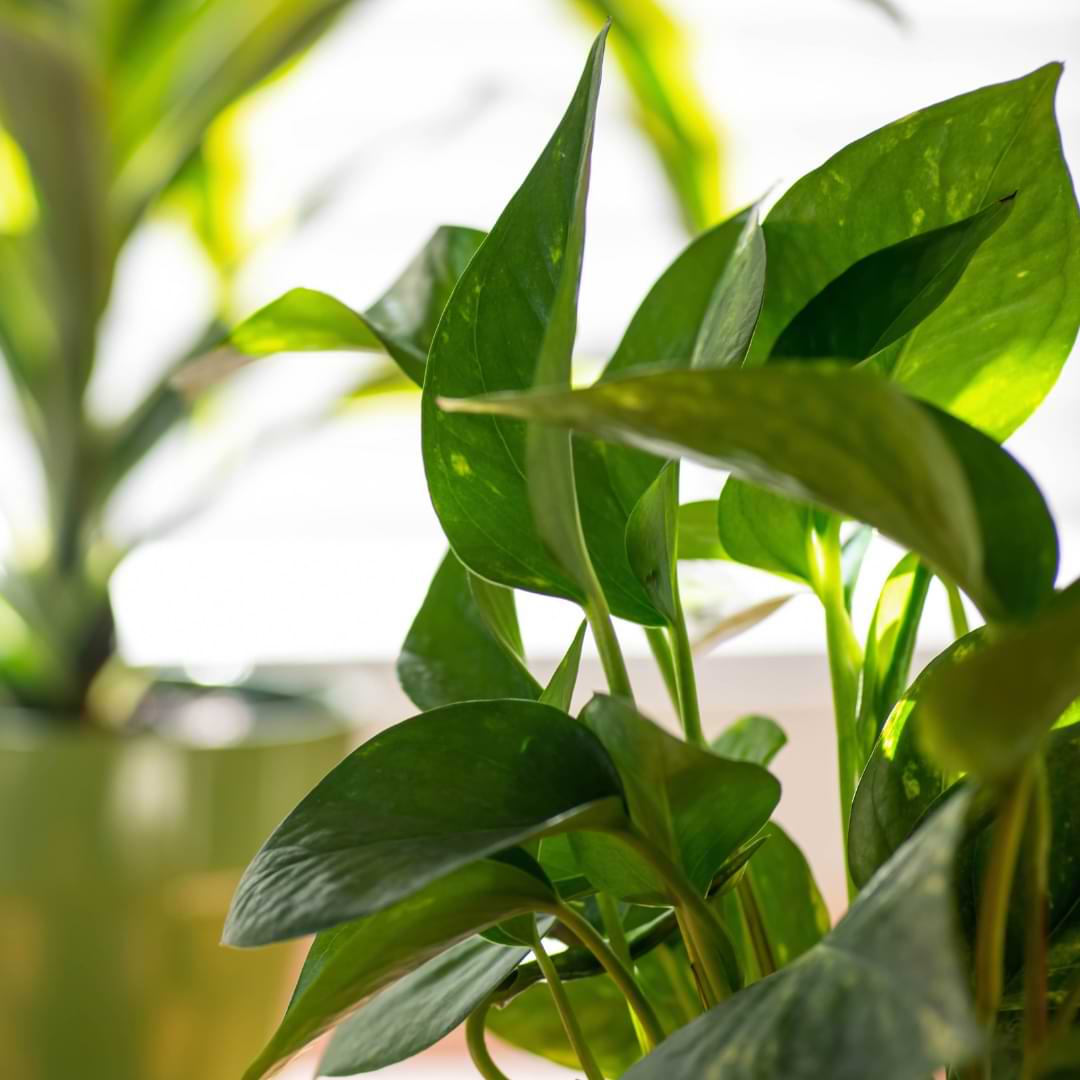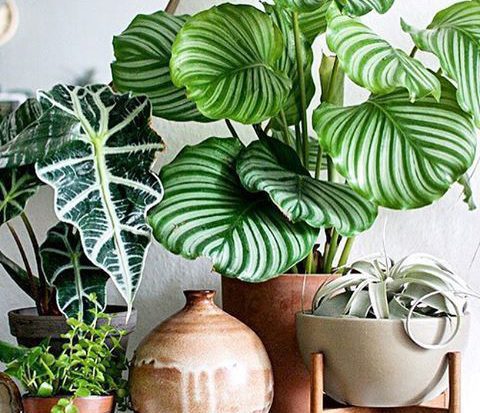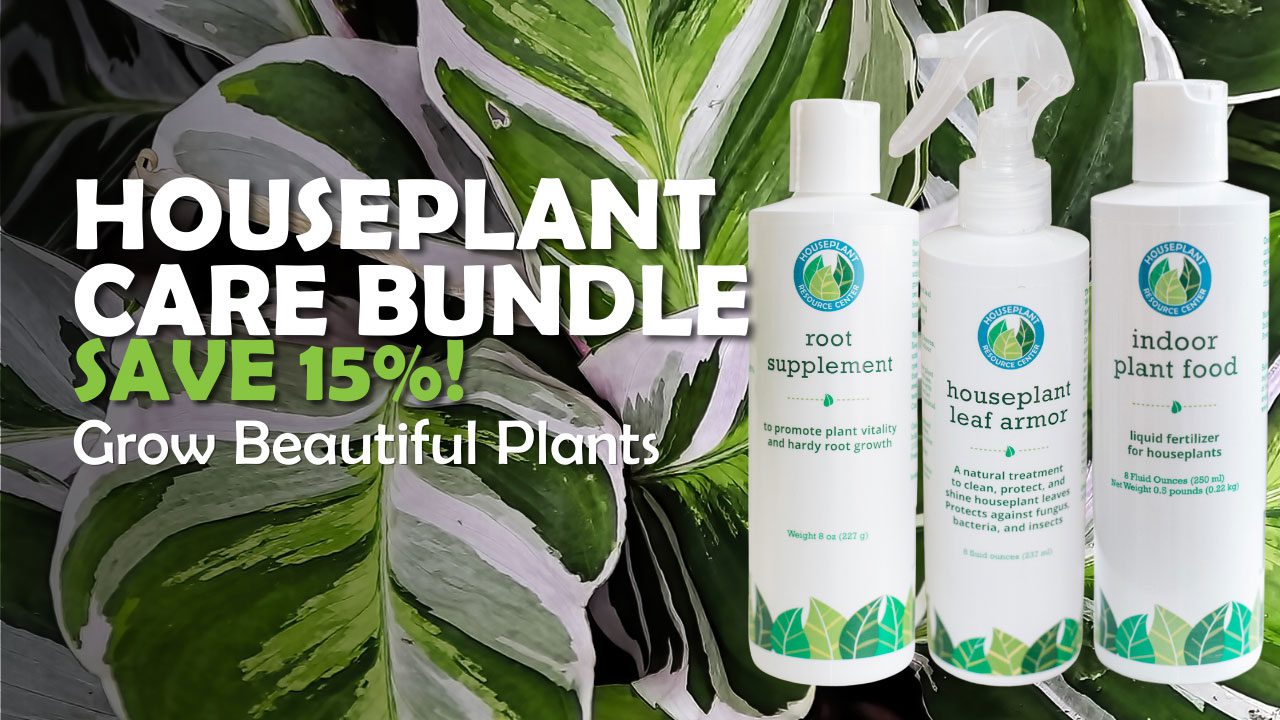When caring for our houseplants, it’s easy to focus all our attention on the perfect lighting conditions, watering routine, and fertilizer choice. While all these factors are critical to a plant’s health, it’s also important to consider the condition of your soil and how well your plant is actually absorbing nutrients from the soil and your fertilizer. If you’re a houseplant lover, it’s crucial to know how to improve nutrient uptake in plants!
After all, even if your plant’s soil is rich in nutrients, it doesn’t matter if your plant can’t actually absorb any of those nutrients.
Soil fertility might seem like a complicated issue, and, well…it is. Several variables go into the fertility of your plant’s soil and the bioavailability of nutrients, including soil pH levels, the microbiome of the soil (that’s right, probiotics aren’t just for people!).
Luckily, improving your soil’s fertility isn’t difficult. It just requires a little understanding of how soil and nutrients work, as well as a few well-chosen ingredients.
Table of Contents
What Nutrients Do Plants Need?
So what nutrients do your houseplants need, anyway?
All plants need sufficient amounts of certain nutrients, however, those requirements will vary depending on the specific needs of the plant variety in question. Different vitamins and minerals are typically responsible for different activities, such as flowering, coloring, or leaf production. Not all plants produce flowers or large leaves, and some are generally heavier feeders than others.
Although, there are a few nutrients that plants will generally need in larger quantities than others. These main nutrients are referred to as macronutrients while the vitamins and minerals needed in smaller amounts are micronutrients.
Here are the basic nutrients you need to know about.
N-P-K
The three major nutrients that plants need in relatively large quantities are nitrogen, phosphorus, and potassium. These are the main minerals you’ll want to pay attention to when you’re shopping for fertilizers for your plants.
Most liquid and slow-release fertilizers will contain a significant amount of these; you can tell the exact amounts from the three-digit N-P-K ratio on the label.
Each number tells you the percentage of the three minerals in that fertilizer. For example, a fertilizer with an N-P-K ratio of 1-1-1 will contain 1% nitrogen, 1% phosphorus, and 1% potassium. This helps tell you whether the fertilizer is appropriate for your plant or not.
Many fertilizers are pretty balanced, but some will have more nutrients than others. This makes them more specialized for certain types of plants depending on that plant’s particular requirements for the types of tissue it produces and cellular activities it must carry out.
For most houseplants, a balanced fertilizer works well. Plants that produce large leaves may need more nitrogen, while flowering plants might do best with a fertilizer that’s higher in phosphorus.
Minerals
Plants also need tiny, varying amounts of other minerals such as manganese, zinc, iron, boron, copper, sulfur, calcium, magnesium, etc. Both liquid and slow-release fertilizers contain trace amounts of these, but the exact amounts may not be listed on the labels.
This doesn’t mean these minerals aren’t essential, however. Your plant can still develop health problems like stunted growth or yellowing leaves if it’s not getting enough of these minerals. But as long as you’re providing the right macronutrients, your fertilizer should have these micronutrients covered.
You probably don’t need to worry too much about these micronutrients, but it never hurts to check out a few reviews online or even pop into some plant forums on Facebook or Reddit to see if other indoor plant owners have had a good experience with the fertilizer you’re considering.
How Do Plants Absorb Nutrients?
Plants absorb nutrients mainly through their roots, also absorbing a minimal amount through the leaves.
Plants have complex root systems that include tons of branching roots and very small “root hairs,” which are superfine roots that are very absorbent. Roots are made up of different layers of tissue, and the outermost layer is semi-permeable, which allows water to pass through. This allows plants to “drink” water, which also comes with nutrients.
Once the water is absorbed, pressure in the roots builds, which pumps a substance called xylem (a component of sap) through the plant tissues. This xylem carries water and minerals through the plant’s vascular system, where the water and nutrients are then utilized for different processes in the trunk, stem, leaves, etc.
Signs of Nutrient Deficiency in Plants
If plants don’t get the nutrients they need in the right amounts, they’ll develop health problems. It can sometimes be tricky to determine the cause of some of these issues, but you can use the process of elimination and look for signs that occur together to pinpoint the cause and decide whether you need to work on soil fertility or nutrient content.
Here are some of the main signs that your plant is suffering from a nutrient deficiency.
Stunted Growth
If your plant hasn’t gotten taller or produced a new leaf in months, it might be lacking the nutrients necessary for leaf and stem formation.
Nutrient deficiency isn’t the only cause of stunted growth, however, but it’s something to consider.
It’s also possible that your plant is just experiencing a dormant period, especially if you notice this happening during the winter. Indoor plant growth can slow down during the colder months.
Your plant’s growth may also slow down if it’s root-wrapped. If you notice the roots growing around the inside of the pot or popping out of the top of the soil or the drainage hole, it might be time for a pot upgrade so those roots can stretch out!
Insufficient light can also cause a plant to stop growing. Remember, growing takes energy and plants get their energy from sunlight!
But if it’s been more than four months or so with no new growth, you’re not seeing any growth during the spring and summer, and your roots seem to have plenty of room, your plant might be lacking some essential nutrients. This is likely the case especially if you notice any of these other signs:
Yellowing Leaves
A deficiency in nitrogen, potassium, magnesium, iron, or sulfur can result in yellowing leaves, though a lack of these nutrients can produce different yellowing patterns.
For example, if your plant needs nitrogen, the older, lower leaves (most likely) may yellow fairly evenly. In the case of magnesium deficiency, you might see yellow patches on the older leaves first.
Side note: Overwatering, underwatering, and insufficient light can cause plant leaves to turn yellow, so be sure to check the moisture level of your plant’s soil and your light setup as well to determine the true cause of the discoloring leaves.
Dying Leaves and Stems
In extreme cases, your plant’s leaves can die and fall off. Of course, there are many causes for this, so be sure to check for other potential causes as well before you start fertilizing.
Check the moisture level of the plant’s soil, the light conditions, the temperature and humidity levels (watch out for heaters, drafts, and vents, which can severely damage plant leaves), and whether your plant might have an insect problem.
It can be frustrating to play this deduction game to determine whether your plant has a nutrient deficiency, but you’ll quickly get used to checking out these different factors when your plant has a problem. You’ll feel like a planty Sherlock Holmes!
And if you notice any of these warning signs, it’s always a good idea to ask yourself when you last fertilized or repotted your plant. If it’s been more than 6 months for fertilizer and/or a year for repotting, it’s safe to bet your plant might be running low on nutrients.
How to Improve Nutrient Uptake in Plants
Nutrient uptake is important to think about when caring for plants because your plant will still experience nutrient deficiency if it can’t absorb the vitamins and minerals present in its soil.
Here are a few ways to help improve the bioavailability of nutrients in your plant’s soil.
Improve Soil Conditions
Make sure to keep your plant’s soil well-aerated. This means your soil is loose and chunky rather than hard or compacted. Air pockets in the soil give the roots room to breathe, grow, and absorb nutrients properly.
Make sure to repot your plants annually (in most cases) to change out the soil. After a while, soil starts to harden and compact, so it helps to repot in a well-aerated, nutrient-dense soil every so often. If your soil starts to compact before your plant is due for repotting, you can always use a chopstick to poke holes and break up the soil.
Adjust Soil pH levels
Soil pH is an easy-to-forget component of plant care. But if you’ve been fertilizing and otherwise taking great care of your plants and yet still have problems, it’s possible that your soil pH levels are off.
pH levels can affect the form, and therefore bioavailability, of nutrients in the soil, so nutrients in a soil that’s too basic or too acidic may not be in a form your plant can use.
Here’s a quick review (in case you haven’t thought about pH since high school chemistry class):
The pH scale runs from 1-14, with 7 being neutral; any substance with a pH level below 7 is considered acidic, while materials with a score higher than 7 are considered basic. Soils can typically have a pH level between 3-10.
Most houseplants do best with a fairly neutral soil with a pH between 6 and 7. You can measure your soil’s pH level with a pH meter. (We like this 3-in-1 meter that also measures moisture and light levels.)
While you can technically change the pH of soil by adding lime to make it more basic or sulfur to make it more acidic, these techniques are more appropriate for large-scale agriculture and just impractical for houseplants. If your soil’s pH is off, you’re better off simply repotting your plant into a better soil.
Nutrient and Probiotic Supplements
Probiotics in the soil can make a huge difference in nutrient uptake. Here are the basics of maintaining a healthy microbiome in your houseplant soil.
Probiotics for Plants
There are plenty of ways to add probiotics to your plant’s soil to provide nutrient uptake. A quick Google search will yield plenty of DIY recipes that utilize ingredients like compost, cultured molasses, kelp, and worm castings, which will keep your soil teeming with healthy microbes!
You can also purchase probiotic supplements online or at most garden centers. These supplements usually come in liquid, granule, or spray form and may utilize isolated microbes, compost, worm castings, etc. These supplements vary greatly, so a little research goes a long way to determine the best supplement for your plant.
Beneficial Microbes
Beneficial microbes are microorganisms like bacteria and fungi that have a symbiotic relationship with your plant. Many of these microbes live in the soil, but some can even live inside your plant’s actual tissues and benefit from the inside out.
One of the many roles these microorganisms play is converting nutrients into a form your plants can easily use. They can also help with a variety of cellular processes and immune functions. Finally, these organisms evolve far more quickly than your houseplants can, which means they can help defend your plants against evolving threats such as harmful pathogens and insects.
Effects of Sunlight on Plant Nutrient Absorption
Like every cellular process necessary to keep a plant alive, nutrient absorption takes energy.
Plants convert sunlight to energy through photosynthesis, so it’s important to provide your indoor plants with the appropriate amount of sunlight so they can have the energy they need to absorb water and nutrients from their soil.
Make sure to do a little research to find out how much light your indoor plants need. If you aren’t able to provide enough natural sunlight, you can use a grow light. We love these full-spectrum bulbs that you can just screw into regular light fixtures!
Improve Soil With Plant Probiotic Supplements
Luckily, it’s very easy to give your plants all the probiotics they need to absorb necessary nutrients from the soil. Just like you can take a probiotic supplement, so can your houseplants!
Our houseplant probiotic supplement is easy to use and can be used in conjunction with Indoor Plant Food for the perfect nutritional balance for your plant.
Just mix a few tablespoons of your probiotic supplement granules into the top layer of your plant’s soil every month to keep the microbiome of your soil healthy and robust for better growth, healthier leaves, stronger roots, and an improved immune system.
Our houseplant probiotic supplement utilizes specially cultured, all-natural ingredients such as dairy manure and straw to produce a wide variety of beneficial microbes to help your houseplants without harming the environment.
Benefits of a Regular Probiotic Schedule for Plants
Including a probiotic supplement in your houseplant care routine can enhance the benefits you expect to see from fertilizing regularly because your plant will actually be absorbing those nutrients.
With a regular schedule of probiotics and fertilizer, you can expect your houseplants to grow faster because they will have the necessary nutrients for photosynthesis and cell formation, as well as respiration and the transport of energy, nutrients, and water around the plant.
You’ll also see higher leaf production, and those leaves will likely grow to be larger, shinier, and more vibrant in color because chlorophyll production will also increase!
While this may be less obvious, your plant’s immune system will also benefit from probiotics, which allow it to fight off fungal or bacterial infections. It may also be less susceptible to severe damage from insect infestations.
And while indoor plants don’t always produce flowers or fruit, probiotics and nutrients can increase your chances of flowering or fruiting if that’s your goal!
Improving Nutrient Uptake Isn’t As Hard As it Sounds!
This might sound like a lot, but improving your houseplants’ nutrient uptake is quite simple.
It’s simply a matter of keeping your soil well conditioned, which means adding nutrients in the form of fertilizer and probiotics with a supplement and keeping things well-aerated.
When you think about how this will look in your care routine, all you need to do is add some Indoor Plant Food to your water on watering days, mix in a bit of Houseplant Probiotic Supplement every month, and use a chopstick to aerate your soil every few months. (But starting with a chunky, well-aerated soil helps a lot here!)
If you run into problems, you can check the pH of the soil with the same meter you use to determine when your plant is ready for a drink.
See? Simple! This is very doable, and also essential if you want the healthiest, most beautiful houseplants possible!
Have more questions about your soil and other houseplant issues? For additional help and support, join our online community and more!
The Last Houseplant Book You Will Ever Need




